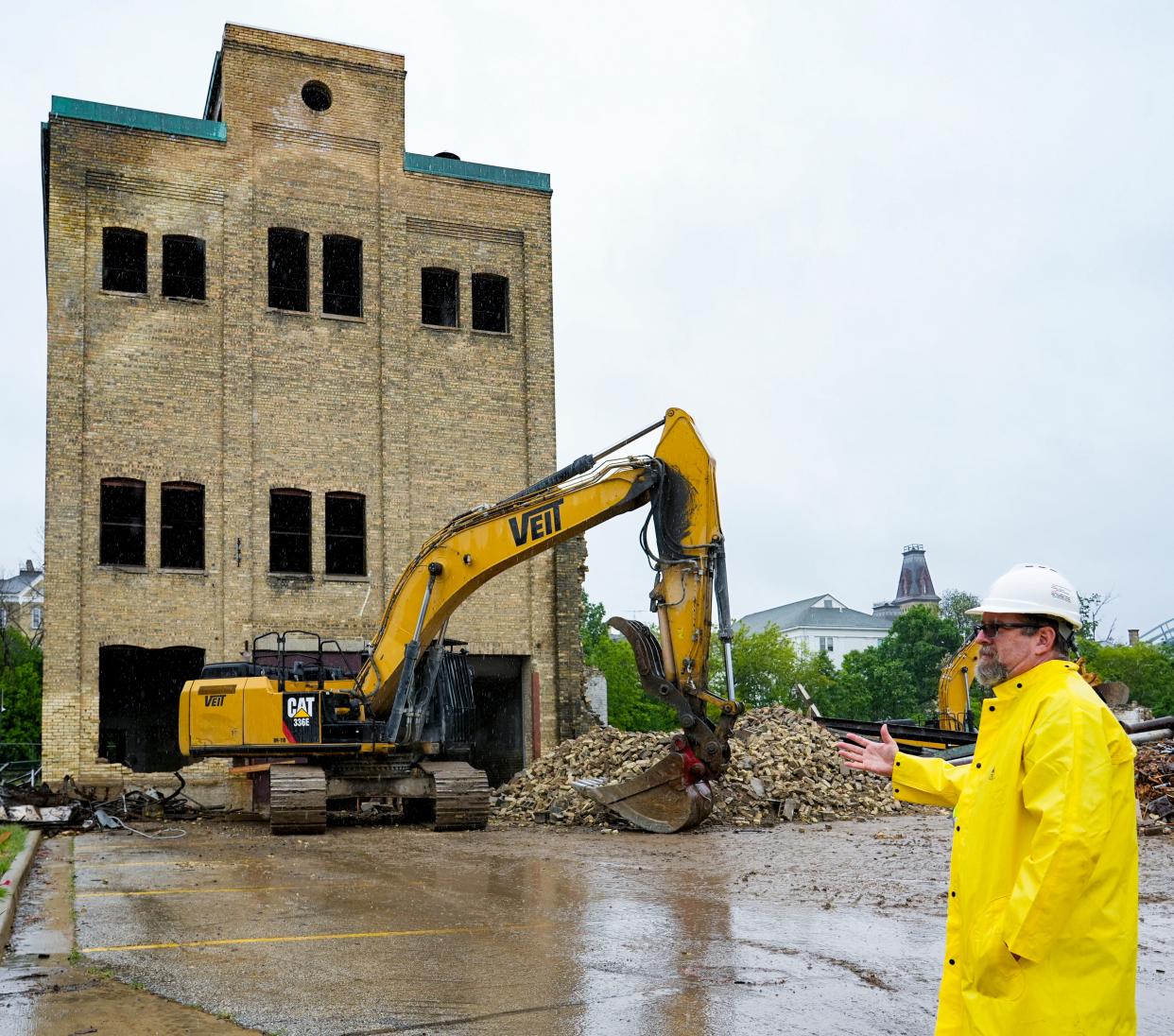The old power plant on the VA campus is being taken down. That means original Cream City bricks can be saved and reused.

Demolition workers are tearing down the old power plant on the Milwaukee Veterans Affairs campus this month.
Well, "tearing down" isn't really the right description.
They're not taking it down brick by brick, but the process is pretty close to that. The goal is to preserve about 1,500 of the bricks so that they can be used to help repair other buildings on the campus.
The reason for the special care? These are original Cream City bricks, the iconic bricks that are still part of Milwaukee's identity — not to mention one of its nicknames.
"We'll reuse them here on campus or the historic society," Scott Ladwig, Milwaukee VA engineering technician said. "At some point, we'll come up with a way for others to use them if needed for other historical buildings."
With the last Cream City brick manufacturer closing in 1929, preserving the bricks that built the city in its early years has become important.
In 1967, a new power plant on the site opened and the old power plant was turned into a storage space. It was most recently used to store salt for melting ice on the campus, which covers 245 acres. The building was deteriorating and parts of the roof had collapsed.
More: At 19, she bought the Mayor Hoan house. It's on the Concordia Historic Home Tour.
Ladwig said the demolition started June 6, and should be done by the end of June. Once the bricks are safely preserved, they will be sent to a company that specializes in bricks and masonry. It will clean and sort out the bricks, a chronic problem for restorationists because Cream City bricks are porous, and turn dark from dirt and pollutants over time.
Once cleaned and sorted, the usable bricks will be sent back.
"I think we're going to use some of them relatively quickly. We've got buildings that are as old as 150 years old," Ladwig said. "We've got like 50 buildings here and 200 acres, so there's always construction, and mostly that's repair and remodeling."
The old power plant site is being turned into a parking lot, adding 47 new spaces. The parking lot project is planned to be finished in September.

The birth of a signature look
The first bricks of a cream color were made in Milwaukee in the 1830s. Initial brickmakers thought the brick was ugly, as they were used to the red brick from the East Coast. The color came from clay deposits found in the city, specifically around the Menomonee River Valley and Kinnickinnic River.
The negative sentiments changed after the brick was found to be durable, and more people warmed up to the color, said Andrew Stern, who wrote his master's thesis at the University of Georgia on Cream City bricks.
The use of the brick expanded as Milwaukee grew, drawing more attention through the years to the point that it became the city's signature look.
"It was really an important part of our early history in that it kind of helped put Milwaukee on the map when the Midwest was just opening up," Stern said. "People would write these glowing reviews from all over the country about Milwaukee and specifically about the brick."
The New York Times referred to it as "the yellow Milwaukee brick."
It didn't hurt that the bricks were tied into the city's major early breweries. Stern said the Miller, Pabst (then called Best), Schlitz and Blatz breweries were made in full, or in part, with Cream City bricks.
"It was used for these grand factory buildings and manufacturing buildings. It was also used all over downtown," Stern said. "It was used in some of the notable mansions and high-style residences. But it was also sort of an everyday brick around the city, too."
By the latter half of the 19th century, Stern wrote, production in multiple brickyards exceeded tens of millions of bricks annually. Price wars and a change in architectural taste, though, led to the brick's demise.
Its end has meant that preservation is critical.
"It's a finite resource. The bricks haven't been made for almost 100 years, so what's left is what is all that's ever going to be," Stern said. "It's kind of important that we respect the history and try to do everything we can to preserve the cream brick architecture that we have around the city."
Our subscribers make this reporting possible. Please consider supporting local journalism by subscribing to the Journal Sentinel at jsonline.com/deal.
DOWNLOAD THE APP: Get the latest news, sports and more
This article originally appeared on Milwaukee Journal Sentinel: Milwaukee's Cream City bricks on VA campus are getting a second life

